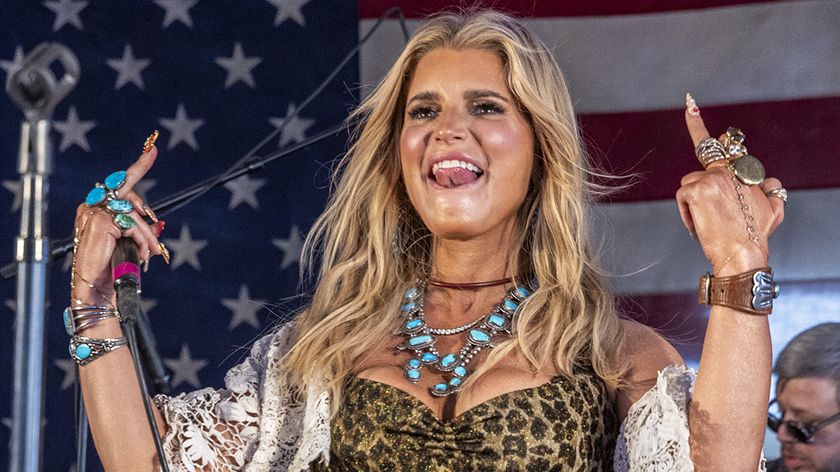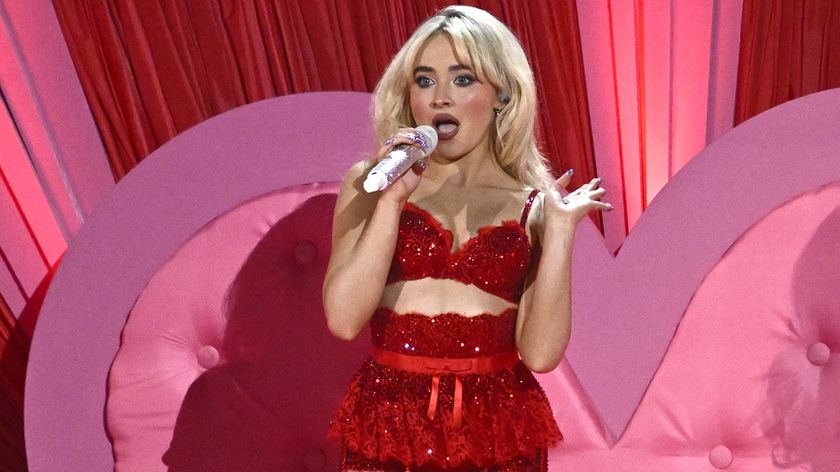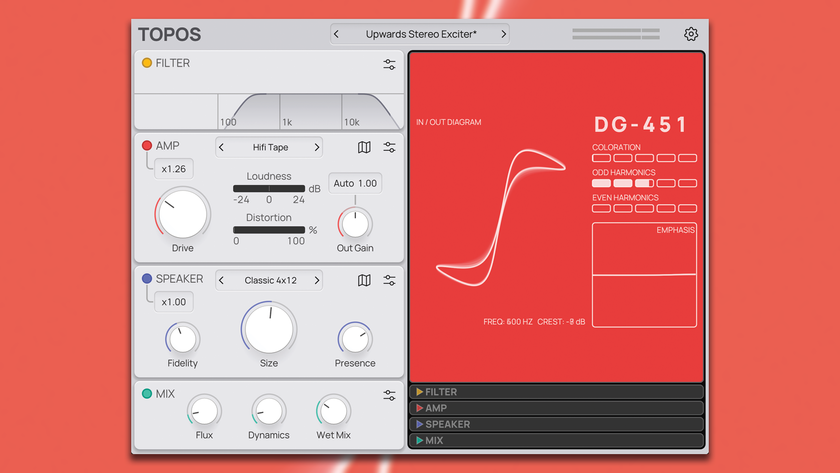Jimi Hendrix: little-known facts and amazing stories
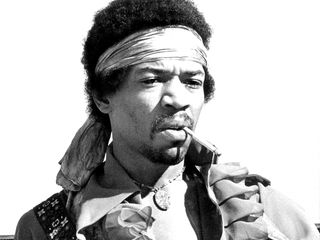
© Joel Axelrad/Retna Ltd/Corbis
18 September 2011 was the 41st anniversary of Jimi Hendrix's tragic death in London at the age of just 27. In the decades since his passing, he has come to be regarded almost universally as the greatest electric guitar player of them all. Meanwhile, countless reissues and posthumous releases have seen his music enjoyed by new generations of fans.
Almost every aspect of Jimi's life and art has been subjected to microscopic levels of analysis, but the collection of rarities, oddities and peculiarities that follows unearths several forgotten gems and celebrates the mysteries surrounding some of his landmark recordings.
Xmas Song and Tobacco Road
Possibly the rarest and hardest to find Jimi Hendrix tracks were printed on two flexies, issued with a pair of books: Jimi Hendrix Volume 1 and Jimi Hendrix Volume 2. Hendrix blogger Xyros 52 from Holland reported buying them for about $20 apiece in Germany in the late 1980s.
They were limited editions (50 of each), and came with copied indices of articles. Xmas Song was the flexi with Volume 1 and Tobacco Road the flexi with Volume 2. Tobacco Road was the last ever song Jimi Hendrix played to an audience. He went to Ronnie Scott's Club, Frith Street, London on 16 September, 1970, to watch his friend Eric Burden's new band, War, and was invited on stage to guest. Less than 72 hours later, Jimi was dead.
My Diary
The man who was to become the frontman for LA psychedelic rock band, Love, Arthur Lee (1945-2006) wrote in different styles as he established himself after high school. He wrote in a Booker T & The MGs style, a surfsound and then R&B/soul in My Diary, which he created for Rosa Lee Brooks.
The recording, released 1 January 1964, featured Jimi Hendrix on guitar. He was invited to session after Lee had noticed Hendrix backing up the Isley Brothers. The record is a rarity, but the tune can be heard on YouTube and MySpace.
Get the MusicRadar Newsletter
Want all the hottest music and gear news, reviews, deals, features and more, direct to your inbox? Sign up here.
Three Little Bears
The Christmas theme was one frequently adopted by Hendrix in his various guises. Merry Christmas & Happy New Year was released on CD in 2010, in 2010.16 minutes of holiday fun music, it was mastered by Eddy Kramer and George Marino and recorded in late 1969, while Hendrix, drummer Buddy Miles and bassist Billy Cox of the Band Of Gypsys were rehearsing for their upcoming Fillmore East gigs, preparing such works as Izabella and Machine Gun.
Hendrix wanted to offer some material to mark Christmas and a new decade. The album contains two versions of a medley of Little Drummer Boy, Silent Night and Auld Lang Syne. It also had Taps in the medley, but was not listed! The album had an added bonus track, Three Little Bears. This puzzled many listeners, as it was not about Christmas, but was a fun, jokey song. It was originally on the posthumous album, War Heroes (1972), not having been released in his lifetime as it failed to meet Jimi's exacting demands.
Little Wing
Inspired by the Monterey International Pop Festival (1967) and the Summer of Love, Hendrix felt that peace, love and the good vibes were like 'little wing, could just fly away'.
Controversially, an alternative background explanation is that he developed the song from an idea he had performing as Jimmy James & The Blue Flames in Greenwich VIllage. Either way, it's become one of his most performed and revered songs.
He used, through his thumb barring across the strings, chords from quartile to tertian harmony, and returned. It's a jazz influence for expanded periods of musical time. The Leslie speaker sound became almost instantly iconic, but modern guitarists looking to get in the right ballpark will find numerous Univibe-style pedals at their disposal.
The glockenspiel had an outing, which was part of the wider experimenting that musicians such as The Beatles and Beach Boys were undertaking. He said: "I dig writing slow songs, because it's easy to get more blues and feeling into them."
The song was remixed for theAxis: Bold as Love album (1967) after the master tape vanished.Eric Clapton laid down a version as a tribute in the same session in which he made Layla with Derek And The Dominos (1970). Other covers include those by The Corrs, The Allman Brothers Band, Sting, Toto, Nigel Kennedy, Santana, Corinne Bailey Rae and many more.
Manic Depression
Bipolar disorder is the more medically correct name for what used to be called 'manic depression'. Chas Chandler, manager to Hendrix in 1967, told him that he sounded like a manic depressive. Hendrix's response was to write about despair and confusion, when what he wanted was 'music, sweet music'.
In 1968, at the Winterland, Hendrix addressed his crowd. He said it was a 'frustrating' song about a cat wishing he could make love to the music, "instead of the same old everyday woman."
Later he called it 'ugly times music'. He said it was so ugly you can feel it. He claimed he was trying to create a 'today type of blues'. The song, described in sleeve notes for the Are You Experienced album (1967) by John McDermott as 'exemplifying skilful marriage of rhythm and lead guitar', was unusual in being performed in triple meter, 9/8.
A primary division of 3 (simple) or 9 (compound) beats to the bar, with 3/4, 3/2 or 3/8 as the common examples, the form is reasonably common in ballads, classical and formal dance (waltz), but less in rock and jazz.Cover versions have included those by Red Hot Chili Peppers, Blood Sweat & Tears, Seal, Jeff Beck, Clawfinger and jazz fusion guitarist, Larry Coryell.
Monterey and its significance
Hendrix's first major US appearance was at the June 1967 Monterey International Pop Music Festival (entry fee, $1), sharing the stage with The Who, Janis Joplin and Otis Redding. Donovan would also have played, but was denied a visa after a drugs matter the year before. The Beach Boys were booked, but cancelled.
The Festival became a focus for hippie counterculture and the birth of the 1967 'Summer of Love', though other places, faces and fans of Sgt Pepper dispute that. The template was used in 1969 for the Woodstock Festival, by which time music and hippie culture had taken hold around the world.
A 1970 record was released of the Hendrix set, coupled with the Redding set. The liner notes described the Jimi Hendrix Experience as a rumour when they came, but they left as legend, 'light years away from anything anyone had seen before'. As Hendrix's fingers scurried across the strings, they gave as much density as other groups got from their studio 8-track tape machines.
They performed Killing Floor, Foxy Lady, Like a Rolling Stone, Rock Me Baby, Hey Joe, Can You See Me, The Wind Cries Mary, Purple Haze and Wild Thing.
Otis Redding went on stage late on the Saturday night, rocking and rolling past the police agreed curfew, and performed Shake, Respect, I've Been Loving You Too Long, Satisfaction and Try a Little Tenderness. Six months later, he was dead in a plane crash.
The DVD, Jimi Plays Monterey/Shake! Otis at Monterey (2006) arising from DA Pennebaker's Monterey film, is available. The vinyl is still around for under a fiver. The unusualness of the whole thing is that it's a piece of rock history, a seminal, legendary moment.
Anarchy
Darryl Lorenzo Wellingon wrote on The Christian Science Monitor on 2 August 2005 about Hendrix, to introduce a book, Room Full of Mirrors, by Charles R. Cross. He said it didn't cover much new material, the Hendrix outlines were well known. But one oddity it homed on was Hendrix's 'flashy, raucous but elegant' guitar solos, described by Ike Turner as 'so elaborate they overstepped the bounds'.
Yet that's the point about Hendrix. Solos became his overarching trademark - "They painted the anarchistic spirit of the late '60s." Hendrix was quoted as describing the sound he was reaching for as 'electronic church music'. A generation later, the UK's Sex Pistols were as anarchic (perhaps without the virtuosity). Their re-envisioning of the national anthem was a symptom.
Cross sorted through 'lies, rumors and facts' in his rock 'n' roll biography (having also tackled Kurt Cobain). The genuine hunger Jimi and his brother Leon grew up with led to stealing from grocery stores; his abusive and neglectful father ironically gained all Jimi's wealth on his death, as no will was left.
Taking a swipe at the establishment was crucial in youth and hippie culture alike. Hendrix personalised to himself the Star Spangled Banner. It came in the final moments of the 1969 Woodstock Festival. He'd been scheduled to close the three day event on the Sunday, but bad weather and production delays meant postponement to the next morning, by which time an audience of half a million had dwindled to 25,000.
Hendrix dramatised the anthem on a screeching electric guitar, with simulations of explosions, blasting, bombs and machine guns overlaying the traditional melody. It shattered every convention conceivable. Mitch Mitchell's furious drumming was remarked on, but he later admitted it was to keep his hands warm.
Missing mastertapes
All of what would be the first side of the 1967 album, Axis: Bold As Love,vanished on Halloween, 31 October 1967 after a marathon recording session. Hendrix was pleased, especially with If 6 Was 9, "I adore it. That was a complete jam, then we put words on afterwards. That's me on the flute. Gary Leeds and Graham Nash did some foot stomping and Chas Chandler's big feet on the fade out."
Evidently Hendrix insisted on taking the masters home 'for safekeeping.' Chandler recalled he went to a party somewhere with them, and when he got back, he'd left a box of tapes in a taxi. It was all ready for release, so that was a major blow.
Back into Olympic Studio the next night and the team mixed the entire A side again. If 6 Was 9 proved the hardest to recreate. Noel Redding, bass player, had a seven-and-half inch per second tape on a small three-inch reel. A taxi was sent to fetch it. It was wrinkled from being used on domestic machines; they ironed it! It was copied onto 15 IPS, and then onto the album.
Some thought Hendrix had suffered a genuine mishap in forgetting the tapes; others that he'd done it deliberately, as it hadn't reached his standards.Whatever it was, if that taxi driver had realised what he'd found in his cab, he would have made money! Unless the tapes are sitting in an attic, awaiting discovery...
Hendrix hair and politics
During the 1960s, the Afro hairstyle, favoured by many African-Americans, reflected youthful rebellion (as all races experienced), but also their growing political, cultural awareness, identity and self-esteem.
The Black Power movement rejected Martin Luther King's non-violent approach and took exception to black people trying to process their hair to imitate whites. As it grew out naturally, the Afro was born, but became then a statement of intent in its own right, invariably being customised to suit individuals.
There is no evidence that Hendrix made any statement of racial assertiveness with his own hairstyle. He conformed to widespread hippie fashion that saw men grow hair as long/wild/shaggy as they wished. His hair matched the shirts, jackets and hats in making him a cavalier/troubadour.
His politics? 'Conservative and a firm supporter of the Vietnam War' thought one commentator online. But during his press conference on 15 December 1969 to a gathering of the Black Associated Press in Harlem, just ahead of a benefit gig, he said: "A lot of kids in the ghetto, or whatever you want to call it, you know, don't have money to travel across country, to see what they call festivals. I mean, seven dollars is a lot of money. Heavy groups should contribute to this cause.
"He was asked why he included Star Spangled Banner in his set. "We're all Americans, aren't we? We play it the way the air is in America today. The air is slightly static, isn't it?"He spoke about changes in America, referring to Martin Luther King. "Now it's time for all these changes to connect," which was taken to mean the political issues of civil rights.
Most biographers have fought shy of concluding where Hendrix stood in the political spectrum on either side of the Atlantic. Often he'd say different things to different people. To hippies he was for social change and against Vietnam War; in Europe he'd be disgusted by anti-war protestors in Paris. This seemingly contradictory position need not be at odds. He could have been annoyed that anti-war protestors couldn't stay peaceful. It just shows that although people know so much about the man, there is still so much unexplained.
Premonition of early death?
It's tempting after someone has died young to say we all knew it would happen; signs were there, even if they weren't. In the case of Hendrix, several of the things he's quoted as saying lead to a conclusion he was aware of his own mortality.
He said: "I'm the one that has to die when it's time for me to die, so let me live my life the way I want to"; and "The story of life is quicker than the wink of an eye...", with variations on blink and wink."You have to forget about what other people say, when you're supposed to die, or when you're supposed to be loving. You have to forget about all these things. You have to go on and be crazy. Craziness is like heaven."
Other quips and truths still ring true. "Music is a safe kind of high"; "you have to go on and be crazy. Craziness is like Heaven"; "in order to change the world, you have to get your head together first", and "music is my religion."
He said: "I used to live in a room full of mirrors; all I could see was me. I take my spirit and I crash my mirrors, now the whole world is here for me to see." He had a sense of humour too: "I've been imitated so well I've heard people copy my mistakes."
His death, the greatest oddity of all
The facts appear to be that on 18 September 1970, Monika Dannemann woke beside Jimi Hendrix's dead body. She committed suicide in 1996, but told several versions of events before then.
While his intake of alcohol and drugs was enormous, many felt that Hendrix was borderline addicted. He was also an insomniac and took some of her prescription pills to sleep, without realising their strength. In his sleep he vomited and choked to death. She called Eric Burdon of The Animals, and together they cleared all illegal drugs from the room and she called the ambulance. She said she held his hand while they were taken to hospital, but that is contradicted by ambulance men who said the room was empty of all except Hendrix.
Time of death was never fully established, but it was clear he'd been dead some time before the emergency call. Burdon claimed it was suicide, but other friends dispute that, saying he had been relatively settled at the time. His system had Vesperax in it, but he would not have died from nine pills. If he'd wanted to die, he'd have taken all those in his pocket. Excessive drinking was also ruled out.
Some believe that he was killed by the FBI through their counter subversive behaviour program, as he'd been seen at 'subversive' events. He had publicly called on Black Panther activists to shoot Washington up. A conspiracy theory (government, mafia) carries some credibility. He could have been targeted by some of those closest to him for money. Or then again perhaps not.
He choked on his vomit, but who induced it? No witnesses survive. Some felt (in retrospect) he'd become paranoid leading them to wonder if he knew his end was nigh.
We may never know the exact circumstances surrounding Jimi Hendrix's death, but we do know that the world lost a huge musical talent, a glitteringly inventive guitarist who left behind a rich legacy and a great deal of unanswered questions.
Click here to enter our competition to win an amazing Jimi Hendrix bundle of CD and DVD releases.
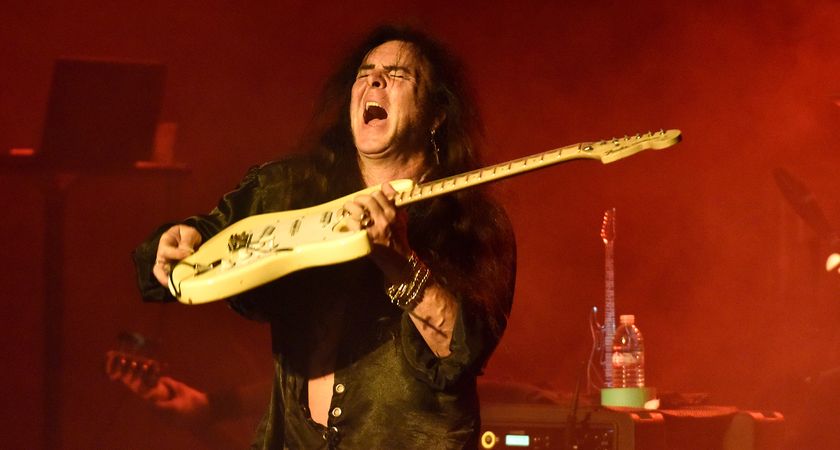
“Those arpeggios... That was the sickest thing I ever heard”: Yngwie Malmsteen on why guitarists should take inspiration from players of other instruments if they want to develop their own style

“I used a flange on the main riff and a wah-wah on the solo. I just said, ‘Hit the record button and I’ll let it rip!’”: Kiss legend Ace Frehley on his greatest cult classic song

